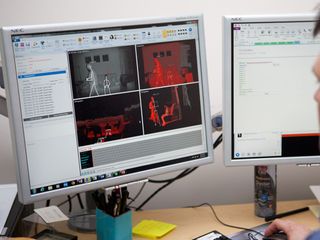Microsoft wants to show the magic that can happen with Kinect

Microsoft took a lot of criticism for their initial decision to make their second generation Kinect a requirement for the Xbox One. Today, a few weeks after the company announced it would sell the Xbox One without Kinect, Microsoft published a feature that looks at how it continues to improve the software for the device.
Microsoft says it brings Kinect hardware and software to the homes of company employees who live 25 miles or less from its Redmond, Washington campus. The idea is to test how Kinect works in real world conditions, with features like facial recognition, speech, gestures and more. The tests are recorded with infrared cameras that are later taken back to Microsoft.
More tests are conducted on the campus itself, including a room where 24 four-megapixel infrared cameras can be used to track and record thousands of different types of movements that can later be put into the Kinect software. Microsoft can process 180,000 video clips in an hour that is then mined for data that is also used to update Kinect.
All of this is supposed to make the hardware and software better, and not just for Xbox One games. Even though pre-orders for Kinect for Windows v2 have just started, thousands of developers have gotten early hardware and software builds that has allowed them to develop new Windows-based Kinect applications.
One of them, Vera, is shown in a Microsoft video. Developed by Reflexion Health, it allows patients who are at home to continue their physical therapy exercises with the application combined with Kinect.
The truth is that Microsoft might have more success with Kinect as a tool for medicine, science and other non-gaming applications than it has had with the Xbox One and the older Xbox 360 consoles. It seems clear that Microsoft is in it for the long haul in terms of continuing to improve Kinect, but only time will tell if their efforts will be worth it.
Source: Microsoft
Get the Windows Central Newsletter
All the latest news, reviews, and guides for Windows and Xbox diehards.

